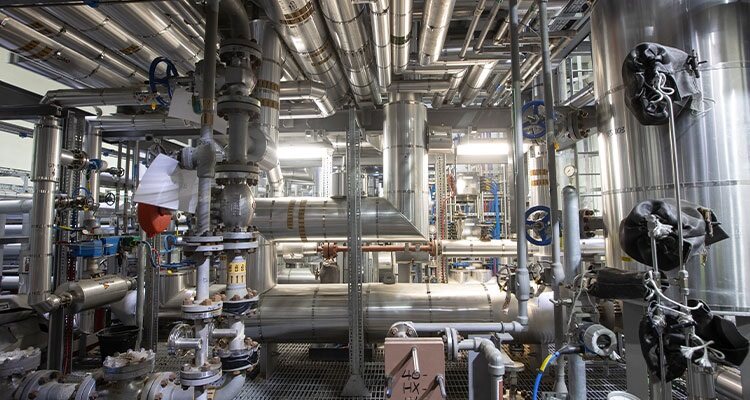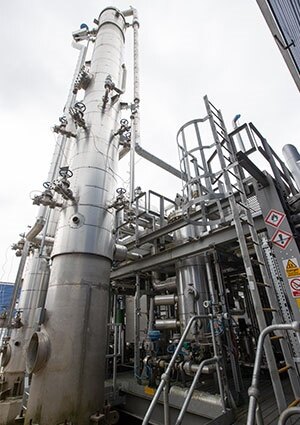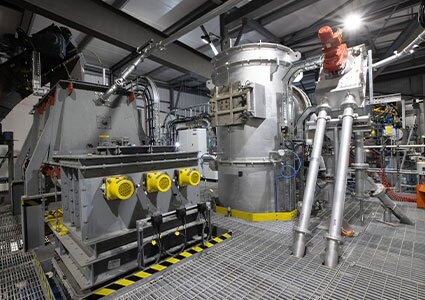
Advanced Biofuel Solutions Limited revolutionizes sustainable energy with efficient plants and RadGas technology
As an industry-leading pioneer in the advanced biofuel sector, Advanced Biofuel Solutions Ltd (ABSL) is at the forefront of transforming sustainable energy solutions. With an ambitious vision, the organization’s goal is to become a significant supplier of biofuels in Europe by 2030. In addition to its remarkable achievements in fuel production, ABSL provides invaluable design and consultancy services to engineering contractors, developers, and owners of advanced biofuel facilities. Most notably, ABSL was founded with a clear mission: to make a significant impact on the environment and combat climate change. “Our business revolves entirely around the generation of negative emissions (offsetting both the residual emissions still produced by most decarbonization solutions as well as emissions that cannot otherwise be avoided.) ABSL solely exists for the purpose of offering carbon solutions to the sectors that cannot easily electrify,” Executive Chairman, Nathan Burkey, begins. He then elaborates on how ABSL has been fulfilling that purpose since its creation.
“When I founded the company in 2019, we acquired the assets from another business which had been developing our technology for about a decade. At that time, our main mission was to finish building our key plant in Swindon. It took two years to complete the installation, and then we embarked on the customarily difficult process of commissioning, which has taken two years so far.
our main mission was to finish building our key plant in Swindon. It took two years to complete the installation, and then we embarked on the customarily difficult process of commissioning, which has taken two years so far.
“The technology we use was spun out from a specialist electric arc furnace business. Furnaces have been used for decades in many applications such as the recovery of precious metals from scrap and in making steel. The ability of plasma to catalyze the breakdown of long chain hydrocarbons – known as tars – generated during waste gasification processes had been well documented in academic literature. By subjecting the tars to high temperatures in conjunction with plasma, we were able to demonstrate an extremely efficient method for their reformation,” Nathan explains. “Employing a furnace in this way enabled us to successfully separate all the hydrogen from the carbon atoms in the waste feedstock, resulting in the production of a high-quality chemical grade syngas. This syngas, a combination largely of hydrogen and carbon monoxide, is especially important for the world,” he continues. “For a long time, industry has been gasifying solid fuels like coal to produce syngas, which is then converted into different fuels, such as methane or diesel, using established processes. However, the current need in the economy, especially as we transition towards a net-zero future, is the production of low-carbon fuels. These fuels either have no carbon at all, or their carbon content originates from biological sources. Our technology enables us to do precisely that.”
Cutting-edge technology
In Swindon, the company uses its revolutionary RadGas technology for biogas generation. RadGas stands out as the most efficient and cost-effective approach to carbon-negative hydrogen and/or biomethane production. This ground-breaking technology plays a vital role in driving the energy transition and facilitating a more sustainable future. Nathan tells us more about ABSL’s use of RadGas technology. “Firstly, it’s important to note that we don’t develop new pieces of equipment. Instead, we leverage equipment that has been extensively used and proven within industry. History shows that all the challenges lie in the integration of the multiple steps required to produce fuels from waste. As you look to scale up, this approach reduces risk as the equipment already has an established supply chain and a long history of functionality, allowing us to readily procure and commission it for our operations. Now, RadGas is a technology specifically designed for the transformation of solid and dry wastes, including municipal solid waste, waste wood, and biomass, into syngas. What sets RadGas apart is its ability not only to gasify waste but also to effectively catch ash and eliminate the tars that would typically condense as the gas cools down at the end of the process. To run our RadGas technology, we feed the waste into a fluidized bed gasifier, operating at around 800 degrees. The resulting syngas, which we would describe as ‘dirty’, is then directed into an electric arc furnace. A centrifugal force in the furnace helps to collect ash in a melt pool, which forms a vitrified slag that can be used as road aggregate when it cools. Additionally, the plasma catalyzes the breakdown of tars by agitating between the carbon and hydrogen atoms, resulting in their complete separation within seconds. The clean syngas is subsequently cooled in a waste heat boiler, producing steam which can then be reused in the earlier stages of the process. This yields an ash-free, tar-free cool syngas, that can then be processed into useful fuels using other people’s mature processes,” he enlightens.
 Tackling the energy transition
Tackling the energy transition
ABSL’s RadGas technology is used within its plant in Swindon, which is the first facility in the world designed to convert household waste into grid quality bio-substitute natural gas (BioSNG) on a continuous basis. The facility was built to process a range of waste feedstocks and their conversion into biomethane. A facility to produce transport quality biohydrogen in parallel with biomethane is currently under construction. Moreover, the plant will also produce 6000 tons/year of carbon dioxide to be liquified for use in industry and 400 tons / year of vitrified ash for use as an aggregate. “Our Swindon plant serves as our critical commercial demonstration facility, but it was preceded by a pilot plant located in the adjacent building, which ran from 2010-to-2015. This pilot plant played a crucial role in validating the scientific aspects of our operations. But pilot plants aren’t built to work continuously, and they have minimal automation. Consequently, we have made a significant investment in developing the control system software and operational procedures through the commissioning of our commercial demonstrator in Swindon. This facility is designed to demonstrate process stability over long periods of time, confidently managed and executed by our operations team working on shifts to keep the plant running 24/7. The primary purpose of this plant is to establish efficient and cost-effective operations.
“We took our time building and commissioning the Swindon plant, as this provides critical learnings to the organization that will stop us from making these mistakes at a much larger and costlier scale. Our Swindon plant precisely follows the process that will be implemented in our full-scale plants, but its compactness allows us to carefully debug and fine-tune the system without incurring overwhelming costs that could jeopardize our financial stability,” he ends.
By leveraging innovative technologies and pursuing an own, build and operate model, ABSL is making a significant impact in advancing sustainable energy solutions. With plans for scaling its technology in the UK and creating European and US sites in the future, Nathan and his team are keen to continue to share their approach to generating negative emissions and the overall advantages of biohydrogen and biomethane with a wider audience. Dedicated to providing answers to the challenges of net zero, ABSL and its solutions are set to play an important role as we move forward with the energy transition.